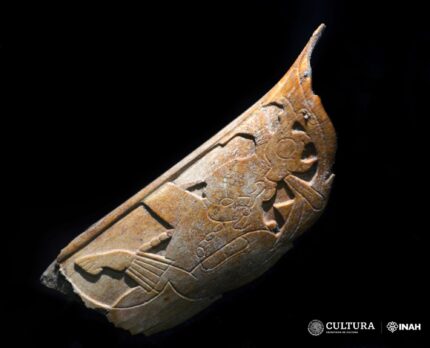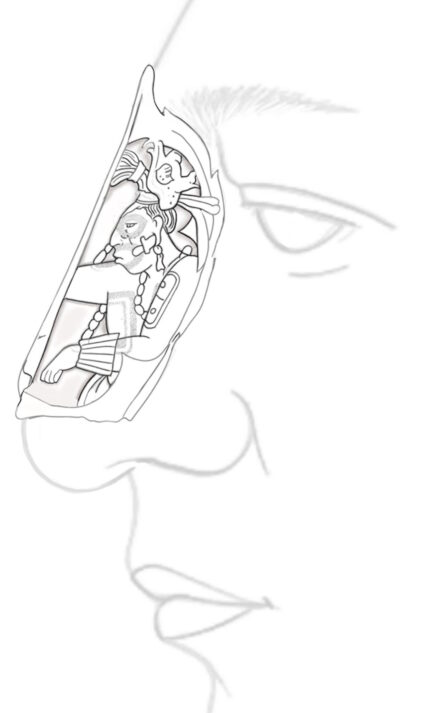 Archaeologists have discovered an intricately carved Maya nose ornament made of human bone at the Archaeological Zone of Palenque in southern Mexico. The curved nose ornament would have been worn by priests and rulers during religious ceremonies to embody K’awiil, Mayan god of maize and fertility.
Archaeologists have discovered an intricately carved Maya nose ornament made of human bone at the Archaeological Zone of Palenque in southern Mexico. The curved nose ornament would have been worn by priests and rulers during religious ceremonies to embody K’awiil, Mayan god of maize and fertility.
It is small at just 6.4 cm long by 5.2 cm wide (2.5 x 2 inches) and 5 cm thick at its thickest point on the bottom of the piece. It was created from the anterior section of distal tibia, where the leg and ankle form a joint. The natural crest of the tibia is a neat match for the center line of a nose.
The bone’s curvature also projects over the bridge of the nose, eliminating the separation from forehead to nose and giving the wearer a straight profile that came to a point like an ear of corn. The Maya elite practiced deliberate cranial deformation, flattening and elongating the foreheads of babies while their skulls were still soft, to reproduce this god’s head shape. Adding a nose ornament to an already-elongated and flattened head created a profile with a continuous and almost perfectly straight line.
 It is carved with exceptional detail and precision. On the left side, the carving depicts the profile of a man wearing a headdress, wristbands, a necklace of spherical beads and ear plugs with a pendant. The man’s left arm bears the Maya glyph for “darkness” or “night.” His right arm extends over the center crest and continues on the right side of the nose ornament where it holds a long, thin rod vertically. At the bottom of the rod is a representation of a skull placed on top of a bundle of cloth.
It is carved with exceptional detail and precision. On the left side, the carving depicts the profile of a man wearing a headdress, wristbands, a necklace of spherical beads and ear plugs with a pendant. The man’s left arm bears the Maya glyph for “darkness” or “night.” His right arm extends over the center crest and continues on the right side of the nose ornament where it holds a long, thin rod vertically. At the bottom of the rod is a representation of a skull placed on top of a bundle of cloth.
The crest of the bone with which the nasal ornament was made appears as the limit of a portal that the character crosses to communicate with the gods and ancestors, a common scene in Mayan art from the Classic period (250-900 AD).
“Another aspect to highlight is the bundle that the character carries. Funeral bundles were a common practice among the ancient Maya, which are present in the iconography”, indicates [director of the Palenque Archaeological Project (PAP), Arnoldo González Cruz].
He explains that the nose ornament was part of the attire of the elite of the city, because it appears in several sculptural representations, such as the sarcophagus of the Temple of the Inscriptions, the Oval Tablet of House E and the Throne of Temple XXI, being carried by the ajaws [kings] Yohl Ik’nal, Sak K’uk’, Pakal I and Pakal II.
The object was discovered during conservation work at the palace complex in the heart of the ancient Mayan city. It had been buried in a pit under a stucco floor as part of a ritual deposit made to mark the completion of a building in the Late Classic period (600-850 A.D.). It was buried in dark earth with seeds, the bones of fish, turtles and small mammals, pieces of a bone awl, obsidian blades and large pieces of charcoal.
when was it discovered?